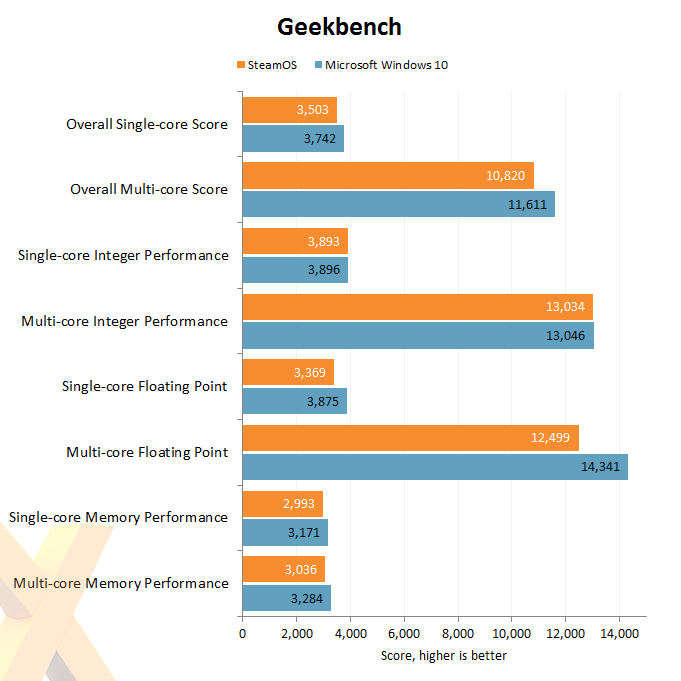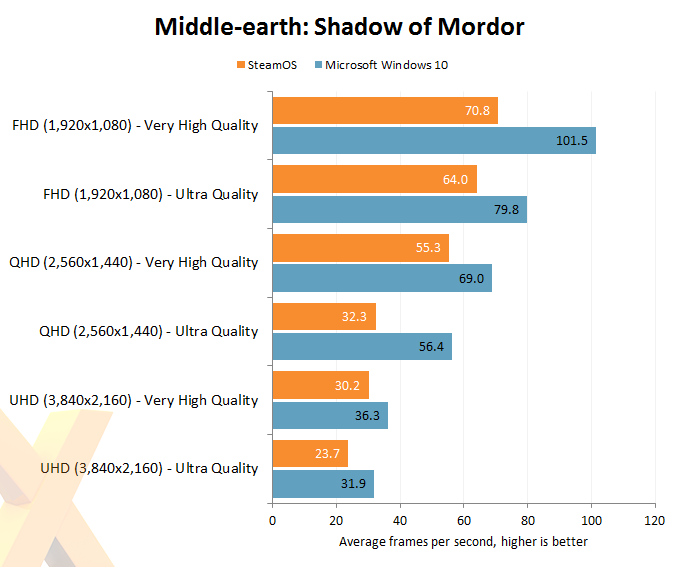Benchmarks: SteamOS vs. Windows
Seeing as our review machine arrived with two operating systems in tow, we reckon it makes sense to evaluate performance between software environments. Driver support is likely to differ and it will be interesting to see if a relatively new OS like SteamOS is able to keep pace with Microsoft's more mature Windows.
The challenge is that cross-platform benchmarks are few and far between, and SteamOS's inability to play the majority of games in our typical benchmark suite doesn't help. Nevertheless, we've managed to run some numbers using the latest release of Geekbench, a cross-platform processor benchmark, and Middle-earth: Shadow of Mordor, one of the most highly-rated games of recent years.

We start with a series of single- and multi-core tests encompassing various facets of processor performance. SteamOS does reasonably well, but performance falls short of Microsoft Windows in each scenario. The latter has a distinct edge in terms of floating-point performance, and that's likely to be reflected in real-world gameplay.

Middle-earth: Shadow of Mordor is but one game, yet the outlook isn't pretty. Playing this particular title, on identical hardware, using two different operating systems, results in a staggering shift in performance.
At full-HD 1080p, SteamOS was found to be up to 30 per cent slower than Windows 10, and we see a similar loss in performance at higher resolutions. It's hard to tell if driver or API optimisations are to blame, but whatever the reason, SteamOS isn't able to fully utilise the hardware at hand and that alone may be enough to convince gamers to pony up the cash for a Windows license.









